Thomas “Church” – Christmann Private Light
Posted on April 4, 2023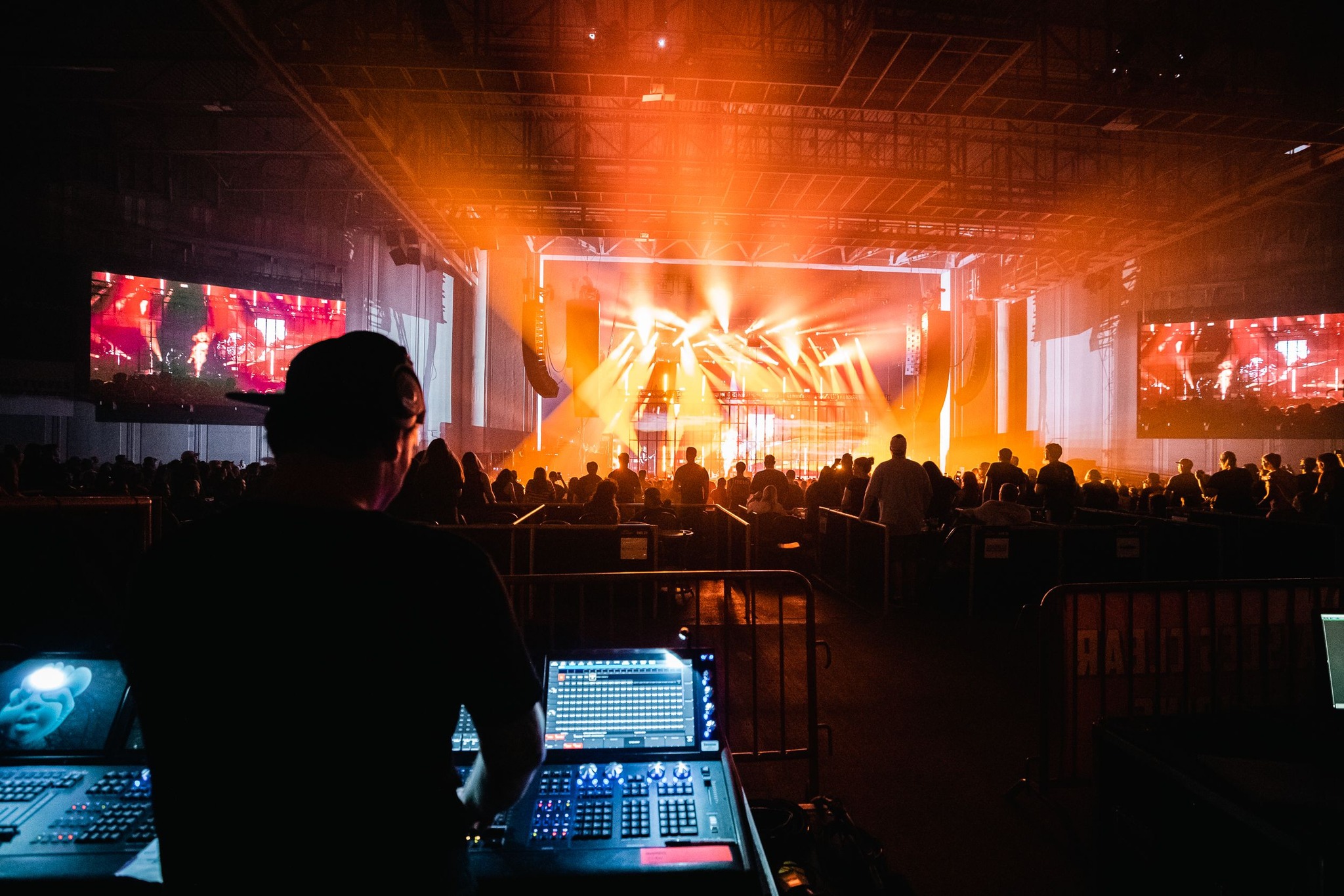
The concerts he has lit for clients like KoRn, Machine Head, and Simple Plan have filled arenas and amphitheaters. But as this Hamburg, Germany-based designer and programmer sees it, at one level, his work involves creating tens of thousands of individual shows for each member of the audience.
Everyone comes to a live performance sharing a similar set of expectations, believes Christmann, however, all fans also has a deeply personal relationship with the artist and the music that is unique to each and every one them. A good lighting design should recognize the individualized nature of this connection and set a framework that contributes to members of the audience enjoying it in their own private space, while they also share the collective concert experience.
Following a design philosophy that combines subtle “framing” and back lighting techniques with theatrical elements and bold strokes, Christmann (who is known as “Church”) manages to achieve this balance. Although his lighting can be searing and intense, it always leaves enough space for audience members to interact with it in their own unique fashion. It is precisely, this sort of equilibrium that makes all art more memorable. Church talked to us about the power of private light.
You’ve said that you like to create theatrical looks for clients. Can you start by telling us how you would define “theatrical” in the context of lighting a rock concert?
“I probably define theatrical different than people who work in the theater would define it. For me it is more about using static luxe and cues to complement the music of the artist. I think it is more important to support the artist and the band by creating strong and big emotional looks than busking every little beep, swoosh, bang or dang. I think the nervous flickering of lights will distract the crowd more than nice framing light with emotional pictures, colors & beams.
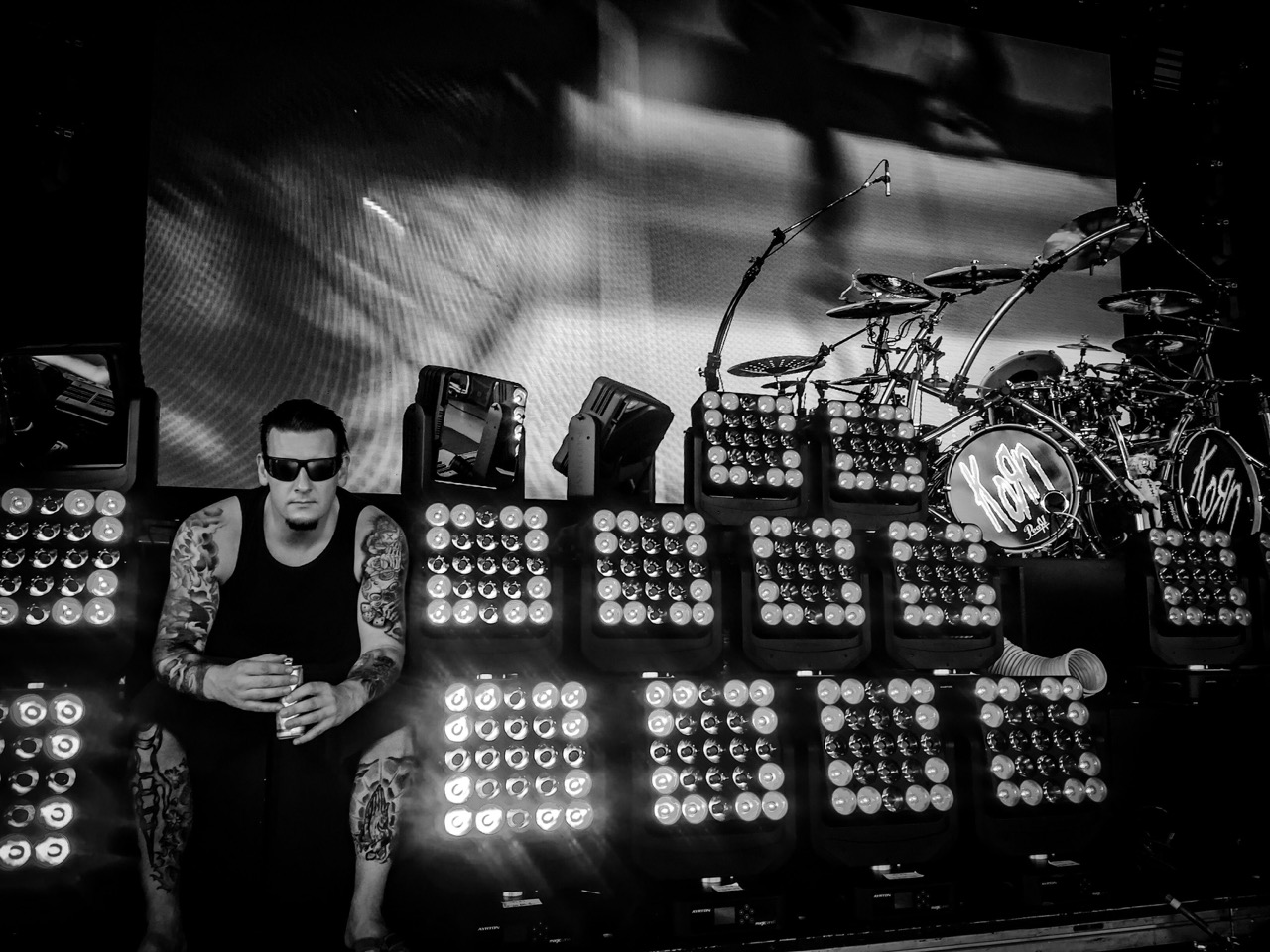
“Keeping a dark or just low dim back light is sometimes way stronger than powerful bright lights. Specially at rock shows I still punch in hard attacks where it’s needed, but I don’t overflow it. The key to a successful show lighting-wise is the balance between beautiful strong scenes and hard attacks on point. No one is going home after a show and whistling the lights! The only thing they remember is if they had a good time and a good show. Lights are more subconscious element of a show, but they touch you strong, even-though you don’t observe it.”
Do you think that each member of the audience interprets these subconscious elements in his or her own way?
“Absolutely! Everyone has a different relationship with the music already, before they even go to the show. Even I sometimes have different emotions or ideas about the music than the artist, who is my client. I am very sure that people in the audience leave a show with different emotions because everyone has their own point of view regarding the music and what it means to them. The only thing I do is support these feelings and translate them with my lights and videos. I’m talking about these goosebump moments — the ones you get when you go to a show and your song is played. These are moments when memories are created as you look at the stage, see the artist and the lights, hear the sounds. This is what brings a never-ending smile to your face, because it’s all lined up and arranged perfectly. If you achieve that as a designer, you have created a good show.”
So, if you met someone at a party and told them you were a lighting designer, and they asked ‘what does your work contribute to a concert?” What would you tell them?
“If someone asked me that, the first thing I’d say is that I make the artist look good and make sure you can see them. I never go too deep into the technical part of this job because most of the people would have no clue of what I’m talking about; plus, it doesn’t make sense to explain all of the little details I’m working with. I tell them I’m trying to support the music and the artist at their shows. My job is to make the crowd feel good and having a blast at a concert in cooperation with the band, audio, special effects, and lights.”
In your recent tour for KoRn your theatrical looks created a very intense, industrial aura on stage. Can you tell us a bit about why and how you created this look?
“Thank you very much for the compliment. The recent design I did for Korn was a natural evolution of the former designs I did for the band. We always try to combine old school rock ‘n’ roll elements of lighting with modern and classy elements and features. We tried to create another dimension to the already stunning stage performance of the band. Korn is always open for new design ideas with special features. In the recent design we created a clean stage and third dimension by boxing in the band with video screens. A huge part of the design is the video content. In cooperation with Raw Cereal, our content creators, we were able to bring this to life. The industrial look was a positive side effect of the design. It came with the structures of the video screens and the variability it opened up to play with the video footage & the blow through for the lighting beams. It gave us another dimension and room to work with.”
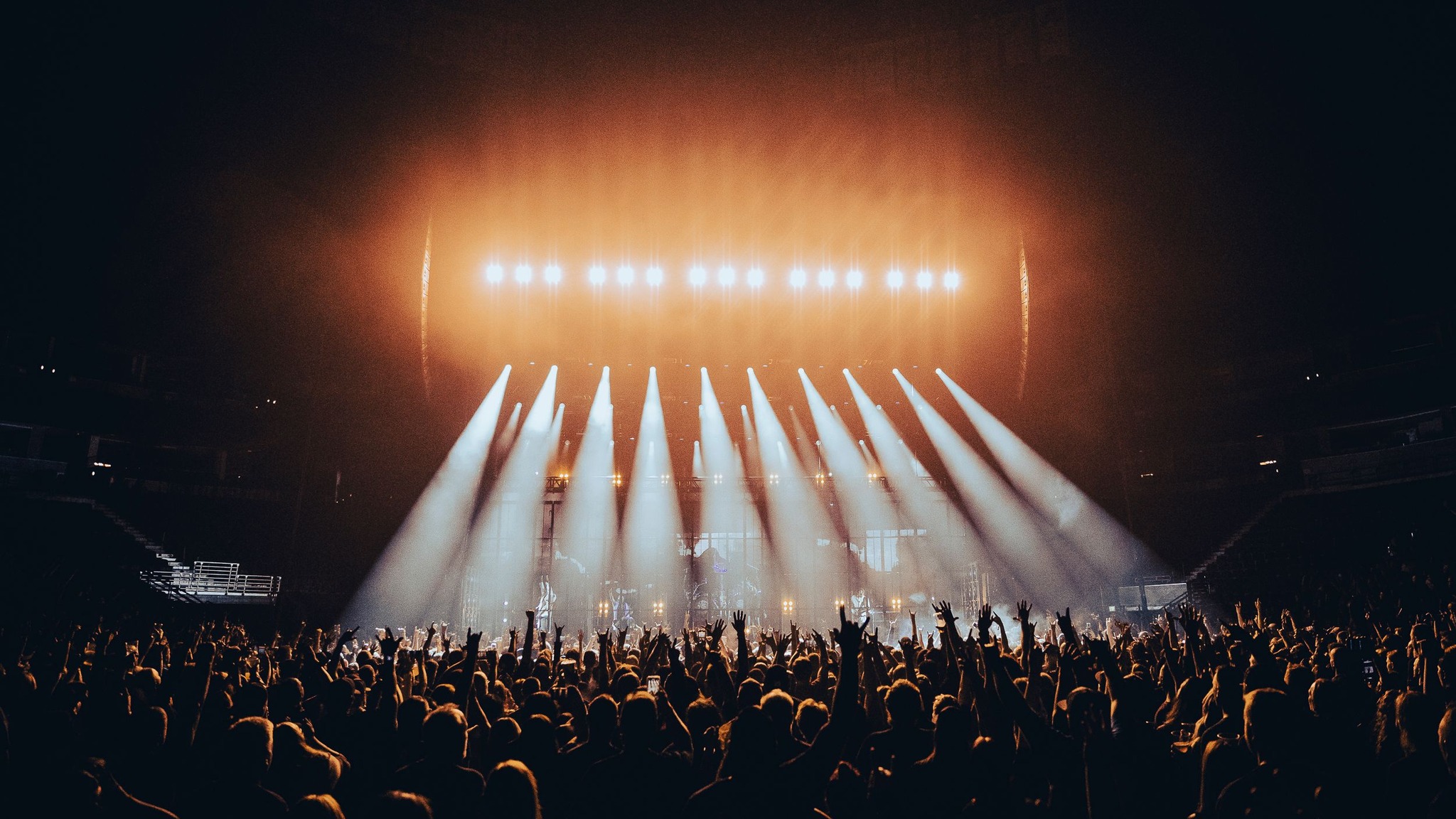
We were impressed by how you lit the audience on that tour. Energizing them with light, but not overwhelming them. What’s the key to successful audience lighting?
“Audience lighting is a big key of every show. By having lights go into the crowd, you make them part of the show. I use lights towards the audience to have the crowd feel the music in their eyes. This is a very important part of designing a light concept. Shadow lighting, gobo beams and movements creating emotions the same as heavy strobe lights, and blinder attacks. Audience lighting has to be in time and on point. When it is, it won’t bother the crowd, as long as it goes in sync with the music and actions on stage. The balance and selection of effects are very important; you don’t want to not overload the audience with impressions.”
The design on the KoRn tour also featured a blow-through video wall. We’re seeing more of those walls lately. Why do you like them? What do they contribute to a show?
“The blow through video wall is a great product. They are opening up the stage without blocking the view. I really like them because you can work with big screens without blocking your lights. The newer blow through products are very variable, detailed, sharp and clear, and thus they don’t stand behind a conventional screen. Having blow-through screens didn’t obstruct my lighting cues. They just added another way to work by having lights pushing through a video screen and working with the content.”
How long have you been with KoRn? How did you start with them?
“I worked for Korn since 2016. I started with them on a European festival tour. That tour I only brought my lighting desk and used just the local flown and floor lights they provided. Korn was very happy by my work with daily changing setups. This started a very inspiring and successful teamwork.”
How has lighting design changed since you started with them? What’s the best thing about those changes? What’s the worst thing?
“Working and creating shows with Korn is always a lively exchange with the band and their management. Lighting designs have not changed much, the only thing that has changed are the multitude on lighting and effect fixtures on the market; they allow us to create so many ideas without fabrication. It’s always a creative process, in cooperation with the artist, the music and your imagination. My goal on a design is to create a functional tour ready package because it has to last for long tours around the world. Artistic design is one thing, but budget and functionality are also big parts of the equation. Costs are huge limits they restrict and inspire your creativity at the same time.”
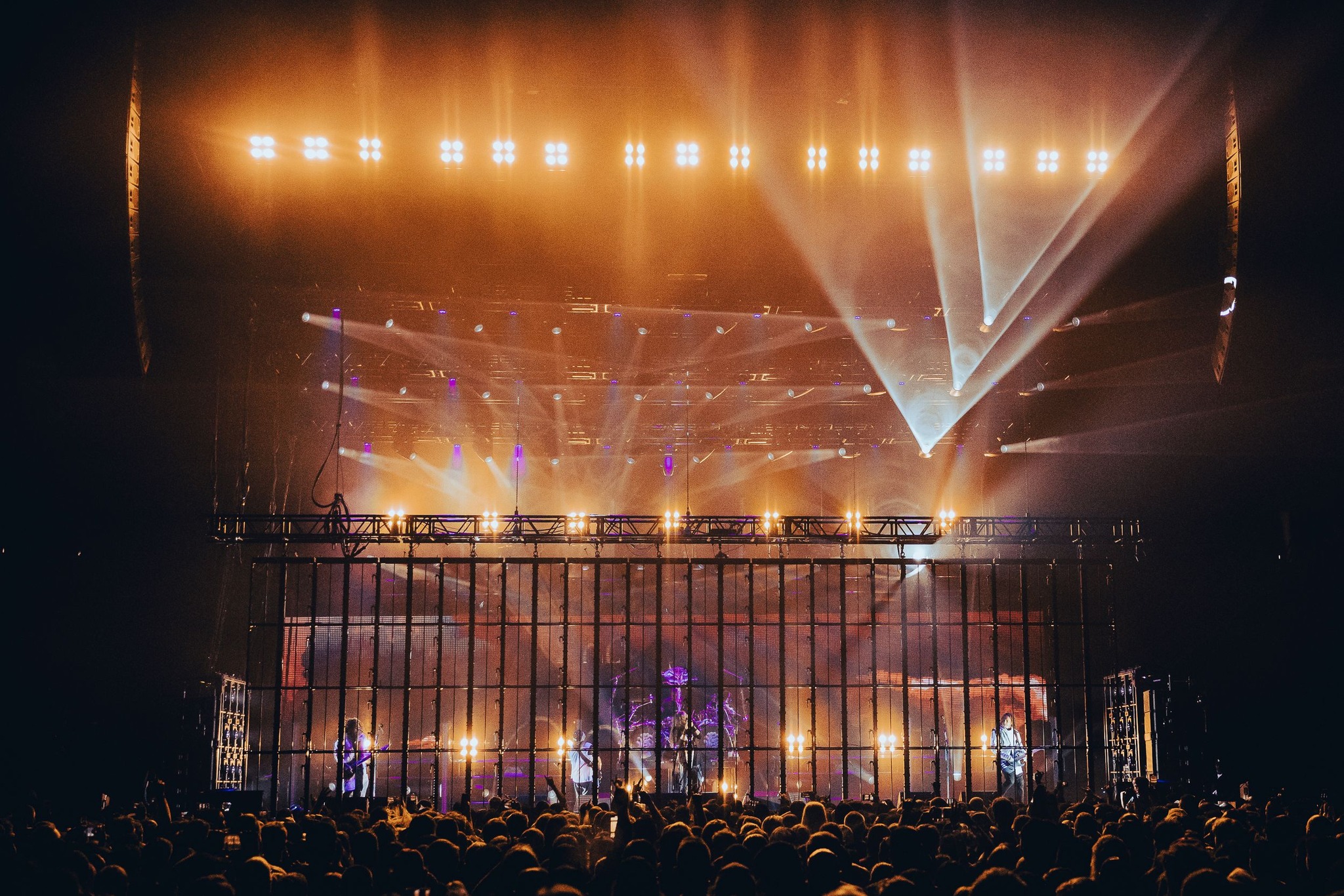
How did you get started in lighting?
“I played in a band for many years and after lots of fun but not high pay, I decided to change sides in the business. A very good old friend of mine was working in lighting already and he taught me many things about lighting techniques over the years. I started working in a venue which had huge rock parties over the weekend – as you call it a light jockey. Working as a light jockey helped me improve my skills, and adapt to very different styles of music. I was for many years a sub for one of the most important lighting designers and operators in Germany. I started touring in 2008 with lots of German artists from every genre. My international touring outside of Europe started with Machine Head for many years, which led me to Korn.”
You’ve also lit a wide variety of other bands, such as Simple Plan, Beatsteaks, Julien K. and Prong to name a few. Do you have to like a client’s music to do a good job lighting it?
“It’s definitely very helpful to like the music of the artist to get a bond with it. If you have a connection and sense for the music, you are able to perform better. Even though it’s not necessary, I would never work for someone if I don’t agree with their message or the behavior they promote.”
Do you busk often? What ‘s the key to successful busking?
“All my shows are based on a cue show. I rarely use time codes. I like to feel the music and go with it. My cues building and guiding the main show and I add on effects cues on parts of the song where needed to enliven the songs. I use song pages with dedicated cues, effects and timings.”
How do you get inspired at the start of a project?
“I get inspired by many things… by looking at new fixtures, by the music of the artist, buildings, movies — and even other designers or lighting technicians. I take input from everywhere – from a park bench in the shadow of an old street light, sunbeams going through a tree, or whatever you can imagine. I suck it up like a sponge and when I need it, I rearrange and combine it in my programming and designs.”
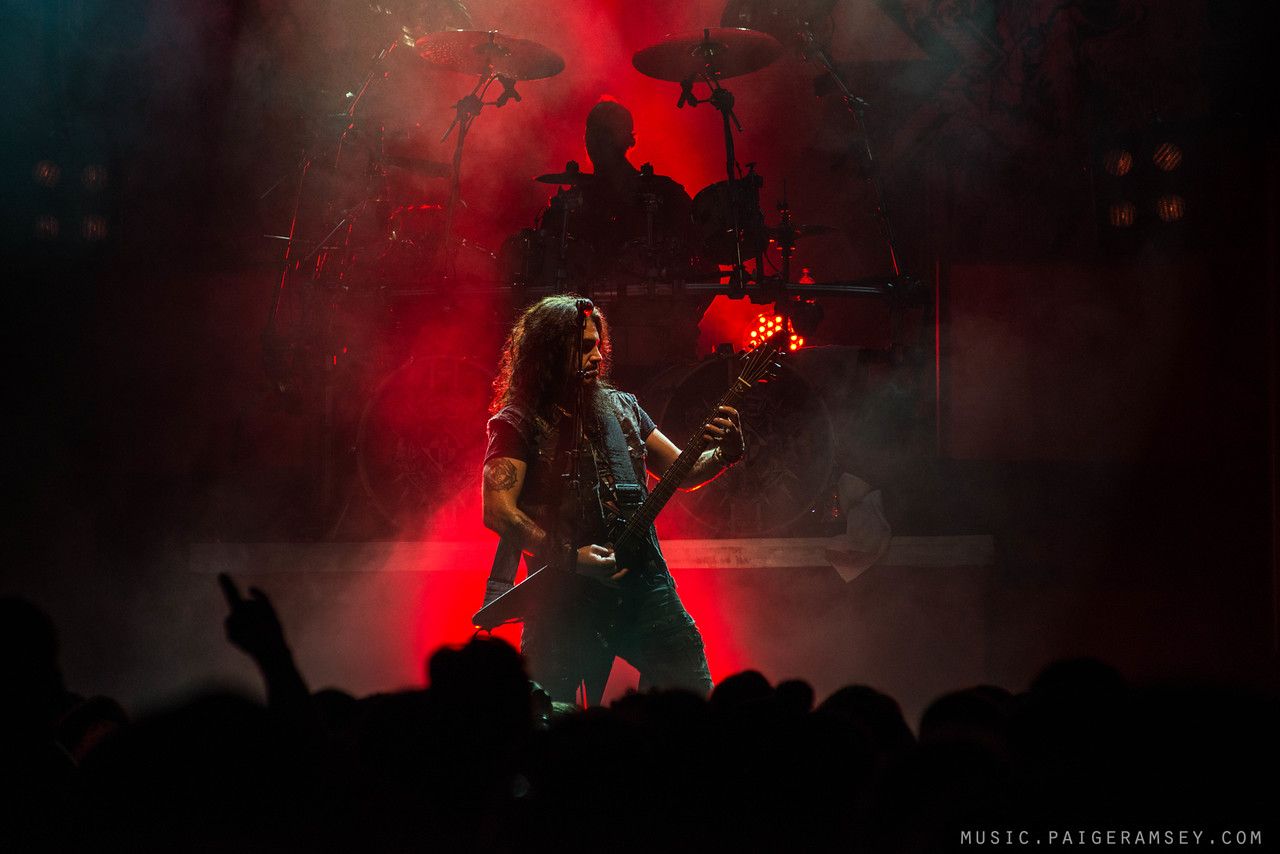
What is your least favorite color to work with?
“I’m not a big fan of red and dark blue lights they always make things look weird and oversaturated. I prefer no color. I love to work with the white lights & the dark of the room.”
Looking at all the different shows you’ve done, is there one that stands out as being the most special for you on a personal level?
I think the recent tour design of Korn is definitely one of it, so is the tour design for them on Summer tour 2019 with custom mirrored Video screens. It’s always fun and touching to see a design come alive & how it works in real life. Doesn’t matter how big or small the show is.”
What is your greatest strength as a designer?
I would say it’s my imagination… to see the final design and possibilities of the design before the process even starts. A sharp eye and mind are indispensable to unlock your creativity. Apparently, I use tools to create my designs like visualizer but it all starts with a sketch in my head and the pictures I draw already in my brain in combination to the music how I feel and see it.”